New US tariffs are set to begin April 2, starting with a 25% duty on imported vehicles. Analysts warn the staggered rollout could cripple production, spike prices and send supply chains into long-term disarray – especially for OEMs navigating EV shifts and global competition.
President Trump’s March 26 tariff adjustment marks yet another disruptive jolt for OEMs, suppliers and logistics providers – intensifying pressure on vehicle trade and cross-border operations in an already volatile tariff landscape.
Here’s what we know so far, and what the industry should be preparing for.
The timeline: What’s coming, and when
According to the White House proclamation issue on March 26, 2025, the tariff rollout will proceed in phases:
| Tariff target | Event | Implementation date |
|---|---|---|
|
All imported vehicles (cars, light trucks) |
A presidential proclamation under Section 232 of the Trade Expansion Act of 1962 announces a 25% tariff on imports of passenger vehicles and light trucks, set to take effect on top of reciprocal import duties and existing levies. |
April 2, 2025 |
|
Auto components (engines, transmissions, electrical systems) |
A 25% tariff is scheduled to be implemented on key auto parts, including engines, transmissions, powertrain components and electrical systems. |
May 3, 2025 |
|
Parts compliant with the United States-Mexico-Canada Agreement (USMCA) |
Automakers under the USMCA may certify the US content of their vehicles, limiting the 25% tariff to the non-US portion. USMCA-compliant parts will remain tariff-free until a formal process is established by the Commerce Secretary in coordination with US Customs. |
Temporarily exempt, tariff implementation date TBD |
A 25% blanket tariff will be imposed on all imported passenger vehicles and light trucks, including those from traditional trading partners such as Canada and Mexico. This is on top of existing import duties, meaning total levies on some vehicles could climb as high as 40–50%, especially if “reciprocal tariffs” and retaliatory measures are introduced in the coming weeks.
Tariffs on key components – specifically engines, transmissions and electrical parts – will follow on May 3, 2025, subjecting a wide swath of inbound tier-one and tier-two parts to new cost burdens.
Although USMCA-compliant vehicles and parts will be temporarily shielded, that protection is conditional. Only parts with verified US origin content are deductible from the tariff base. According to the White House, this temporary exemption is transitional: non-US parts will soon face the same 25% import duty, even if part of a USMCA-qualifying product.
There’s also uncertainty around the impact on other US trade partners. “It’s unclear whether the blanket 25% tariffs also apply to existing free trade agreements the US has with around 20 other countries. Outside of USMCA, the most significant in terms of automotive manufacturing is the South Korea – US FTA. It appears not at this stage,” said Daniel Harrison, automotive analyst at Automotive Logistics.
“Hopes for a UK exemption to the blanket tariffs – no longer being part of Europe – also appear to be fading,” Harrison added.
The price of new tariffs
Cox Automotive warns that the new tariffs could immediately reduce North American vehicle production by as much as 20,000 units per day, or nearly 30% of daily output. Most factories depend on just-in-time shipments of parts – often from overseas or across the Canadian and Mexican borders. A sudden 25% tariff will disrupt this model and inflate component costs across the board.
According to S&P Global Mobility, these tariffs represent a “reset of the automotive value chain”, suggesting lasting structural impacts. Their forecast projects a significant drop in US light vehicle sales – from 16 million to 14.5-15 million annually – if the policy holds.
Bain & Company’s Automotive Practice concurs. In a March 26 briefing, Bain wrote that “tariffs are the latest disruption to hit a supply chain already stretched to its limits.” The firm urges OEMs and tiered suppliers to pivot toward more resilient sourcing models and regionalise production wherever possible.
Even for companies currently compliant under USMCA, the outlook is uncertain. With US-origin component deductions and non-US parts still subject to future tariffs, the rules may change midstream.
As Automotive Logistics’ Harrison puts it: “While the temporary reprieve for USMCA-compliant parts offers some time to adjust, their eventual inclusion in the tariffs will be immensely disruptive and damaging to US-Mexico cross-border trade flows. The North American automotive supply chain is fundamentally highly integrated, a structure that has been in place for around 40 years under the framework of the USMCA (formerly NAFTA). Trying to unravel and reshore those supply chains cannot be achieved overnight – it will take years, if not decades.”
Harrison adds that the staggered rollout of tariffs – first on finished vehicles, then components, followed by the eventual expiration of USMCA exemptions – “may seem merciful, but it merely means the impact will be more of a slow-motion car crash than one spectacular pile-up.”
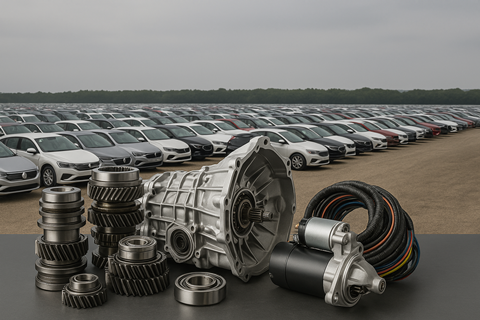
What comes next?
Industry insiders are bracing for additional reciprocal tariffs – possibly within the next week. This means auto imports could face compounded duties, and tit-for-tat retaliatory tariffs from the EU, China and Japan could further restrict global vehicle flows.
“The US’s planned tariffs and retaliatory tariffs will upend the highly optimised and globalised automotive supply chain and result in very few winners,” said Harrison. “The impact will range from severe to potentially catastrophic for many OEMs and tier suppliers, who are already under pressure from the EV transition and increasing competition from China. We’re likely to see widespread supply chain disruption, major plant shutdowns or relocations, significantly higher vehicle prices (rising by $4,000-$12,000), and as a result, a sharp decline in both sales and production – resembling a Covid-style industry shock.”
J.D. Power already sees this ripple effect materialising. In a joint March 26 release with GlobalData, the firm reported a March sales bump – as consumers rushed to buy cars before expected price hikes. They noted that incentives were held flat in late March despite high inventory levels, due to uncertainty over incoming tariff-driven costs.
Meanwhile, AutoPacific’s president and chief analyst, Ed Kim pointed out that these tariffs may not stop competition from low-cost Chinese EVs. While duties might slow imports in the short term, cost and tech advantages will continue to favour aggressive global entrants – leaving US automakers in a tightening competitive vice.
In Europe, Harrison weighted in further: “The proposed 25% tariffs on all products imported from Europe to the US are particularly concerning, as they would significantly impact European exports. European OEMs currently send more than 20% of their vehicle production to North America. The effect on European production volumes – and both inbound and outbound logistics – could be severe, particularly for German and Italian OEMs. That said, many of these brands, such as VW, BMW and Mercedes, operate significant production facilities in the US, which are likely to benefit under such a tariff policy.”
Trump’s March 2025 tariff regime signals a new era for the US auto sector – one where geopolitics is driving supply chain structure. Multiple industry sources are warning that “bold moves” are now required to future-proof operations.
Harrison continued: “In terms of logistics impact, there will be an inevitable temporary ‘pull forward’ of finished vehicles and components – creating significant short-term demand spikes for inbound and outbound logistics providers, ports, terminals, yards, compounds and warehouses. But once the tariffs take effect, volumes are expected to fall sharply. The question then becomes: what next? If tariffs broadly remain in place – as many assume – vehicle volumes will remain lower across many routes, drastically impacting logistics flows and decimating revenues for logistics providers.”
Trump tariffs: A timeline of impacts on automotive logistics
- 1
- 2
- 3
- 4
- 5
- 6
- 7
- 8
- 9
- 10
- 11
- 12
- 13
- 14
- 15
 Currently reading
Currently readingMarch 26 set the wheels in motion, here’s what’s coming before tariff D-Day on April 2
- 16
- 17
- 18
- 19
- 20
- 21
- 22
- 23
- 24
- 25
- 26
- 27
- 28
- 29
- 30
- 31
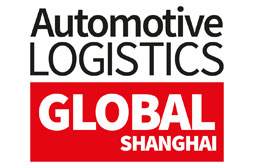







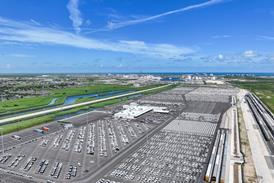

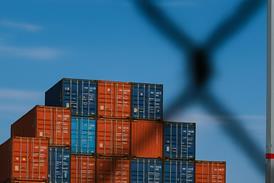

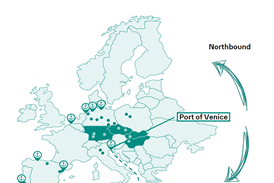





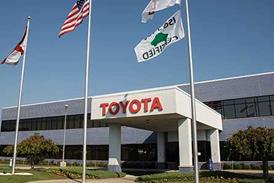










































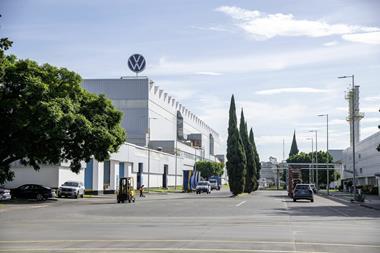


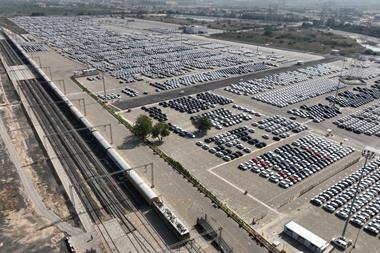



No comments yet